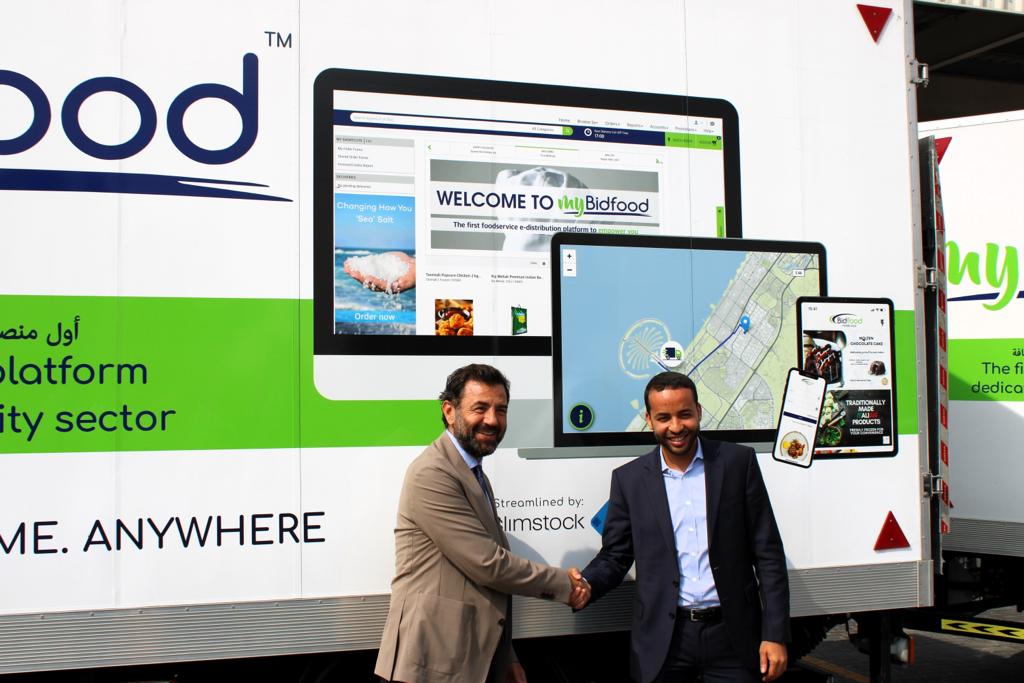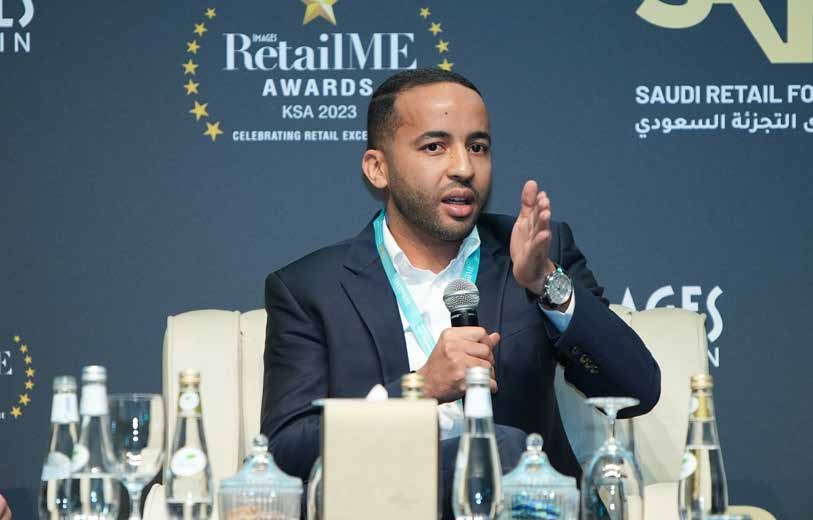Industry may be burdened with challenges and hurdles, but the future looks bright thanks to technology and technological breakthroughs. Supply chain is the enabler of business strategies and can be a competitive advantage if managed well and can surely transform into a growth engine, asserts Rachid Labrik, Vice President MEA, Slimstock.
Supply chains are stressed today with many disruptions that can come in any shape or form. These are attributable to customer expectations and the rapid emergence of disruptive technologies. Businesses in the Middle East, like its peers elsewhere in the world, have some significant hurdles to overcome. In this exclusive and wide-ranging interview with Global Supply Chain, Rachid Labrik reveals
among several other observations, why supply chain leaders must be proactive and prioritise eliminating waste and superfluousness to tap into the vast positive and remedial potential available.

(GSC) You’re no stranger to the region. What drew you to finally make the move to the Middle East? (RL) I have been working with different customers in the region before coming to settle down here. I love the hospitality and the warm relationships you can establish here. I wanted to get closer to my Arabic roots and experience more of these values. But there is also tremendous potential and growth opportunity in the Middle East. Coming here and being a part of it was a huge draw. It’s a massively exciting time for the region. I’m hopeful that my 14 years of experience helping businesses throughout Europe to create more effective and profitable supply chains can help me make a significant impact.
(GSC) What are the biggest supply chain priorities in the Middle East? (RL) The Middle East is a region with a distinct geographical advantage. It is a global crossroads. Not only is it an international supply chain hub, but businesses in the region also play a pivotal role in other global supply chains. Growth is very much on the cards throughout the region, and the supply chain is right at the heart of what the kingdom is building. However, business leaders must set the right foundations to unlock its full potential.
Long-term growth and prosperity should be the aim, but to realise both of those ambitious goals, businesses need to focus on sustainability. If you can build a future without waste and better optimisation of resources, your success will stand the test of time, and future uncertainties lie in wait around the corner.

(GSC) You come from a technology background, with a degree in Machine Learning and AI. To what extent do you think technology is the key to businesses succeeding in the Middle East? (RL) Technology can be a massive differentiator – something that will only become more and more crucial for companies in the region who are looking to succeed. And make no mistake, leveraging AI and Machine Learning can unlock enormous opportunities for growth.
Big four consulting and auditing corporations, and industry experts agree that technological transformation is necessary to stay competitive within the existing operational models. It should work hand in hand with your strategic vision and commercial expertise. Let’s look at e-grocery businesses as an example. AI powers the e-grocery industry.
Not so long ago, it was near impossible to maintain a profitable operation. Life was very different in the days before dynamic replenishment and automated fulfilment were made possible through the rise of sophisticated technologies. Today, grocery businesses are embracing AI and Machine Learning to achieve stronger margins. But more importantly, these businesses are doing this while delivering a better customer experience with less waste, less working capital locked up in stock, and less wasted talent.
Many companies are experimenting with AI-powered chatbots, personalized recommendations, and other applications. More recently, ChatGPT and Open AI initiatives have opened up new possibilities of applications of LLM (Large Language Models) in a number of areas – for both internal purposes and customer facing applications.However, I am a firm believer in the notion that silver bullets don’t exist. AI is no different. Indeed, AI can only bring value if the conditions in your business are optimised. You must first have quality data as a priority. And following that, you need a good level of maturity.
Only when you have both of these in place can you begin to focus on value-added tasks. So many companies look at automation as a way to level up. And rightly so, but without accurate, high-quality data, you could be making mistakes you don’t become aware of until it’s too late.
However, if you have the right foundations, you should look to automate everything you can. Augment planner’s intelligence with strategic automation, and a waste-free supply chain is a credible goal you can strive to achieve.
(GSC) How else can businesses leverage technology to create a waste-free supply chain? (RL) In my opinion, technology exists to help us make better decisions faster. I believe supply chain technologies can act as a co-pilot for your supply chain operations.
Imagine a tool which can help you: Collaboratively align plans, budgets and forecasts with business strategy; streamline sales and operations planning; automate financial consolidation for joined-up planning; strategically close talent gaps for an empowered workforce; gain a comprehensive view of cash flow dynamics and provide instant access to highly accurate demand insights through advanced predictive analytics.
That is a tremendous amount of power to have at your fingertips. It might have sounded like a pipe dream not so long ago, but it’s now fully achievable with the right technology partner.
(GSC) What tips do you have for businesses to accelerate the adoption of innovative supply chain technology? (RL) To exploit the full potential of any technology or tool, we must have the right pillars to ensure its success.
The supply chain is no different. And your success will hinge on two critical factors: your people and your processes. The processes should be designed to run efficiently and effectively, with correct inputs and outputs. They should be designed using the best practices. To make this all successful, there should be clear governance, clear RACI and RAPID. A plan for learning & and development and change management.
(GSC) Can you elaborate on that? How can you empower your people to deliver better business outcomes? (RL) You must empower your people throughout your supply chain and create resilient processes. For the people part of the puzzle, you must be talent driven as a business.
That means that a focus on reinforcing technical and functional skills is critical. Train your staff, develop them, challenge them, and help them succeed beyond even their own expectations. It also means hiring the right talent. Skill gaps in your business can mean a limitation to your immediate and long-term success. Highlighting where these gaps exist and taking tangible steps to address them will be a cost-saving exercise that pays dividends down the road.
You also need to think about automation. Automation can become an asset for the business to help people. Automation can become an asset for the business to help people. Can you automate routine supply chain tasks so that your team can invest their time where it counts most? Can you automate your routine replenishment workflows without losing control? Can you autonomously consider anticipated demand, promotions, events, and product scarcity?
If so, you will create unrivalled agility throughout your end-to-end network while delivering the service your customers deserve.
(GSC) What role can Slimstock play in helping businesses sharpen their competitive advantage? (RL) I take great pride in the work we do both across the Middle East and further afield. As a global business, we support 1,500 customers across every discipline. That’s a huge responsibility and something which we take very seriously.
From helping businesses leverage the power of AI, to supporting supply chain teams to analyse and improve their operations, I’m lucky to work for a company at the cutting edge of supply chain technology. Our mission in the Middle East is simple: to ensure rapid adoption and seamless integration to help businesses unlock a return on their investment as fast as possible. We provide supply chain leaders with the knowledge, the robust insight, and the intelligent tools they need to enhance performance and enable continuous improvement.
Finally, we help our customers to stay at the top of their game by continuously enhancing our award-winning supply chain planning platform, Slim4, with the latest innovations.
(GSC) Slimstock is already trusted by some of the biggest brands in the region. How will you help these businesses to move forward? (RL) We have established a fantastic customer community in the Middle East region. But to help our ever-growing network of customers deliver long-term performance improvements, we are here to support every step of their customer journey.
That is why our customers play such a crucial role in shaping our product development roadmap.
From helping our customers to advance the maturity of their S&OP and IBP processes, to developing new and improved capabilities in areas like network balancing, consensus forecasting, rough-cut capacity planning and workflow management, we work with our customers to build the tools they need to unlock sustainable growth.
But we also understand that the best lessons come from your peers. The Middle East is a melting pot of some of the brightest minds in the supply chain business. By bringing these people together to share ideas and solve supply chain hurdles via our academy or industry events, we can make a real difference.
(GSC) How does Slimstock look at Sustainability? (RL) The goal is to enable businesses to make environmentally conscious decisions in their supply chain processes, contributing to a more sustainable and eco-friendly approach to supply chain.
Our solutions optimize demand forecasting, minimize waste with precision, and cut transport waste through consolidated orders. Our aim is to drive profitability, efficiency, and sustainability at the same time!







